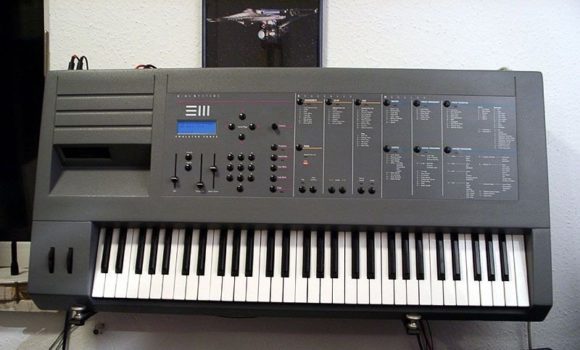Peter:
And then there was AKAI from Japan. Did you see them as a threat at that time? AKAI was absolutely unknown at that time.
Dave:
The early entry from Akai, the S612, was very limited and while we took every competitive market entry into account, we did not see it as a threat to the Emulator line. At the time, we were more concerned and surprised by Ensoniq. The Mirage used a technique called „drop sample“ to shift pitches, which produces horrible distortions in many sounds, but it‘s far cheaper than the technology in the Emulator.
I have said before that I regret not realizing the poor quality musicians would tolerate simply to be able to afford a sampler at that time. I recently talked to a Mirage owner; he lusted after an E2 – the E2 was worth it, but just completely out of his price range. But E-mu was never able to become a low-cost producer.
Peter:
AKAI started to sell complete racks with the S900 and later the S1000. There was nothing like that coming from American companies at that time. Why?
Dave:
The reasons were both economic and historical. The Emulator started out as a keyboard; since it pre-dated MIDI we never conceived of a rack. So our habit continued to be to design keyboards first, with racks as an afterthought.
I recall our marketing folks passionately requesting that we make a rack E2, but it became a question of resources and economics. If we just tried to yank the keyboard out of an E2, the savings in cost would be tiny. To make a truly cost effective rack, the panels, circuit boards, power supply, etc., would all need to be re-designed. While that might make money, would it make more money that spending those same resources on the next generation of keyboards?
As we delayed and dithered, companies like Akai established themselves in the rack market, and we had to play catch-up. Ultimately, we began (with the EIII) to design circuit boards that could be used in either a keyboard or a rack.






